In 1995, back when the independent film world was in a (seemingly) much more stable place, Edward Burns burst onto the scene when his debut feature The Brothers McMullen won the Grand Jury Prize at the Sundance Film Festival. After being picked up by Fox Searchlight, this tiny $25,000 movie with no stars went on to make ten million dollars at the box office. In the annals of American independent film history, it’s one of the great rags-to-riches tales.
Fifteen years—and many films—later, Burns has returned to his roots by making another 25k feature, Nice Guy Johnny. This time, however, rather than holding onto the crumbled dream of the specialized theatrical release model that he himself participated in, Burns and his team have decided to forge a new path. Though he went straight to iTunes with his star-filled 2007 release, Purple Violets, something feels different this time around. This week Burns, in partnership with Cinetic’s FilmBuff, simultaneously released Nice Guy Johnny on iTunes Movies, Nationwide Video On Demand, DVD, and other digital platforms. By both returning to his micro-budget roots and embracing the role of spokesman for this burgeoning distribution platform, Burns has become an unexpectedly inspiring role model for all aspiring indie filmmakers. We spoke to him on the phone just hours after he appeared on… The Today Show?!
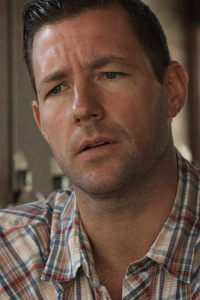 Hammer To Nail: You just made a $25,000 indie with—excluding yourself—actors that are far less recognizable than those you’ve worked with in the recent past. This morning, you were on The Today Show. Obviously your name and your track record factor into the equation, but I’m wondering how something like The Today Show or Access Hollywood literally came to be. Was that a Cinetic thing? Was it a publicist? Or was it personal connections you’ve forged over the years? Mind you, I ask this as someone who is putting the finishing touches on his own $30,000 movie.
Hammer To Nail: You just made a $25,000 indie with—excluding yourself—actors that are far less recognizable than those you’ve worked with in the recent past. This morning, you were on The Today Show. Obviously your name and your track record factor into the equation, but I’m wondering how something like The Today Show or Access Hollywood literally came to be. Was that a Cinetic thing? Was it a publicist? Or was it personal connections you’ve forged over the years? Mind you, I ask this as someone who is putting the finishing touches on his own $30,000 movie.
Edward Burns: It’s a combination of all of those things. There’s a friend of mine, a guy named Marc Schiller who I actually met going to a screening of the Banksy film, who’s involved in this company called ElectricArtists and has also been helping. Given the challenge that we saw ahead of us—a $25,000 film with unknown actors and we were gonna try a brand new distribution model and try to make a dent or impression—it was about calling in a ton of favors. Because I worked at Entertainment Tonight, some of my friends now work at Access Hollywood, so we were able to get a story on there. I do have a publicist that we hired and they came up with the idea, at the Tribeca Film Festival, of talking about what this distribution model was going to be. That was in April, and while now everything has come to a head, back then it was tough to get an interview with someone to discuss the idea of this. But once the story got picked up and started to gain momentum, that’s how some of these other things happened, and that’s what led to The Today Show and their interest in that. Granted, if I wasn’t a guy who also acted in Hollywood films… I don’t know that the “unknown” filmmaker would get The Today Show. [H2N laughs]
H2N: At our site, we’ve started a monthly VOD report to do our own tiny part in spreading the word to help assure people that there are brand new, exciting films available through their remote controls. While this whole VOD platform is still in its infancy, it’s not a brand-brand new concept, but it still feels like this whole VOD world is trapped, like our $25,000 movie universe, in a tiny bubble. I feel like even distributors are having trouble finding a way to educate audiences about this. What percentage of this whole publicity push is you simply wanting people to see this particular film of yours, and what percent is a conscious effort to use your influence to spread the word about VOD?
EB: The second part is a big part of the push. I remember when we were at Tribeca, and John Sloss, who I’m sure you know, has this new venture called FilmBuff, who is our distribution partner with this film. And he gave me an argument, but not so much for VOD. Maybe five years ago, I had this movie called Looking For Kitty. And the movie got one tiny, tiny distribution offer from THINKFilm. It was one of those no advance partnerships, and we had made the movie for a quarter of a million dollars. John said, “Look, you’re gonna sell the movie for nothing and they’re gonna own it, just so you can satisfy that part of your ego that wants the film to be released theatrically.” He goes, “If you were to just go straight to DVD, you could make your money back. And maybe make some more money.” At the time—this was maybe ’04 or ’05—my ego wouldn’t allow me to do it. So, we sell the film to THINKFilm, get no money, we’re supposed to have a partnership, and we’ve never seen a red cent from it. Years later, when we’re presented with the same kind of offer for Purple Violets, now iTunes is up and the iTunes movie site is in their infancy. And we thought, “Look at how bands are delivering their music directly to their fans. Maybe there’s a way for us to try and do that with the film.” And we did. I don’t have the numbers exactly right but I think it was like a nine-month exclusive window for iTunes. And we did surprisingly good business there.
 Flash forward three years later to Nice Guy Johnny. Two different things happened. We knew what we could make at iTunes even if we didn’t have the kind of “stars” and well-known faces that we had in Purple Violets, which certainly helped. So we said, “Let’s just think the lowest possible number we can do on iTunes. If we’re even gonna entertain theatrical, someone needs to beat that number.” But we never even got there, because John then said to me, “Remember back to Looking For Kitty. This is the moment. We can sell your film for theatrical distribution, and you’re gonna open up on four screens in New York and LA, like you did with Looking For Kitty, and we’ll keep our fingers crossed that if this company has enough money to market the thing, we might make an impression, and you can expand to the next level of a platform release. If we do well there, maybe, maybe you can go on and expand fully.” He said, “Or, you can release your film onto VOD and be in 46 million living rooms, in that moment when you’re doing all of your press.” I heard that, and I was like, maybe if I was a young guy and this was my first film, I don’t know that I would be willing to forego theatrical, because you do fantasize about having your movie play in theaters. I don’t want to say “I’ve been there, done that,” but most times I’ve ended up disappointed with how the films were handled theatrically. As my producing partner says, “There’s nothing special about a specialized film release.” We just thought, we’ll take our film and we’ll do the most aggressive film festival tour we’ve ever done. And that’ll satisfy the need to see it in theaters, sit in the back row with an audience, hear the laughter, and get the thrill of theatrical out of that. But financially, it just made absolutely no sense to try and sell the film to an audience theatrically. And those were all of the things that played into embracing this model.
Flash forward three years later to Nice Guy Johnny. Two different things happened. We knew what we could make at iTunes even if we didn’t have the kind of “stars” and well-known faces that we had in Purple Violets, which certainly helped. So we said, “Let’s just think the lowest possible number we can do on iTunes. If we’re even gonna entertain theatrical, someone needs to beat that number.” But we never even got there, because John then said to me, “Remember back to Looking For Kitty. This is the moment. We can sell your film for theatrical distribution, and you’re gonna open up on four screens in New York and LA, like you did with Looking For Kitty, and we’ll keep our fingers crossed that if this company has enough money to market the thing, we might make an impression, and you can expand to the next level of a platform release. If we do well there, maybe, maybe you can go on and expand fully.” He said, “Or, you can release your film onto VOD and be in 46 million living rooms, in that moment when you’re doing all of your press.” I heard that, and I was like, maybe if I was a young guy and this was my first film, I don’t know that I would be willing to forego theatrical, because you do fantasize about having your movie play in theaters. I don’t want to say “I’ve been there, done that,” but most times I’ve ended up disappointed with how the films were handled theatrically. As my producing partner says, “There’s nothing special about a specialized film release.” We just thought, we’ll take our film and we’ll do the most aggressive film festival tour we’ve ever done. And that’ll satisfy the need to see it in theaters, sit in the back row with an audience, hear the laughter, and get the thrill of theatrical out of that. But financially, it just made absolutely no sense to try and sell the film to an audience theatrically. And those were all of the things that played into embracing this model.
H2N: Now that you’re available on DVD and VOD, have you continued to book more festivals, or are you sensing that they back off once a consumer release date has been set?
EB: There was only one festival that didn’t take us because the film would have been out on VOD or DVD. But we’re still going to Savannah, we’re still playing, I think, in Virginia and Denver. The other thing that we did, Ted [Hope], who you know, obviously, suggested film societies. He said what’s a market where your films have done well where they don’t have a festival. So he got me in touch with Graham [Leggat] over at the San Francisco Film Society and we’re doing a special screening for them and then talking to a bunch of the young filmmakers and students who are part of the film society about how you make a movie for $25,000, and to talk about these new distribution models. I think everyone is recognizing all of these models are starting to break down, and you have to be willing to go with the flow or change with the times.
The one that I keep hearing from people is, when we were having all those conversations about what we were doing with Purple Violets and iTunes in ’07, the reaction to that news was, “What? Really? Oh, man, that’s terrible. Aww, that stinks, why would you do something like that?” And now it’s just the opposite. I think people are looking at what happened with the music business, and the people that would not let go of the CD crashed and burned. And I think the same thing is true with indie film theatrical distribution. With the very rare exceptions, it seems to be over. Look at the results of some of these really good films that have just come out in the last four weeks, and it’s depressing.
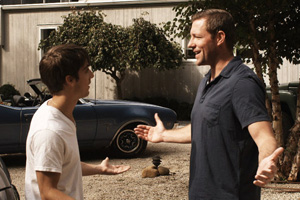 H2N: Along with that, everyone has been saying that “the sky is falling,” but my question is: was there ever really a sky in the first place? Aside from the freak occurrences, the Napoleon Dynamites and especially The Brothers McMullen, hasn’t it always been that we’re flailing on the margins making these low budget movies that don’t make much money?
H2N: Along with that, everyone has been saying that “the sky is falling,” but my question is: was there ever really a sky in the first place? Aside from the freak occurrences, the Napoleon Dynamites and especially The Brothers McMullen, hasn’t it always been that we’re flailing on the margins making these low budget movies that don’t make much money?
EB: I think so. Whatever that moment was in the mid-‘90s through when Mark Gill made that speech about “The Sky Is Falling,” that was probably around ’05 or ’06, whatever that ten to twelve year run was, I guess the “golden era” of this American indie film movement. But I think we’re back to where the business probably should be. When I was a kid and when Slacker and Metropolitan came out, these were movies that were made for under $100,000, and when they got picked up for distribution, I don’t remember the exact numbers that they did, but I think Slacker maybe did $800,000? I think Metropolitan maybe even broke a million. But that was considered an outrageous success, that that kind of small movie could do a million dollars. You know, that’s probably the more realistic expectation for these types of films—a million being the outrageous success. You should not be in the indie film business to become a millionaire. [H2N laughs] You should be working in television or making studio films. You have to know this is a much smaller profit margin, if there are any profits to be made at all.
I think that’s also why we decided to make this film for $25,000. We knew that we could make a film for $25,000. We did not want to deal with any interference. We wanted full creative control. We wanted to make a film that, when we were done with it, we felt great about it. But also, we did not want the pressure of having a financier look at us and say, you know, “What happened to my three million dollars?”
H2N: Speaking of that, I know you’ve talked about having reached a crossroads a few years back in which you were pitched a Hollywood director-for-hire project. Your films, in a superficial sense, aren’t radically different from a certain type of studio picture. While I understand why you turned down that for-hire gig, I’m wondering if you’ve ever contemplated making one of your own pet projects on a much grander scale. Or does this get into that inevitable, annoying issue of creative control again?
EB: It’s two things. One, my version of indie films has less to do with, as you said, “radically different storytelling.” Mine are just personal stories. They’re representative of my world and my experiences. Over the years—I’ve been doing this for 15 years—a couple of different times, we’ve tried to make bigger versions of my screenplays. And every time we’ve tried, I have come up against the same thing that I’ve always resisted, which is the minute someone’s going to write a substantial check—I’ve never made a movie for over five million dollars—the one time I was given that much money, they changed the title of the movie on me. [H2N laughs] And there were some other things that were done. I knew I could have made that same film for a million dollars and I could have made my version of the movie. And I just think, “Why would I ever go back there?” So, even in the past when we’ve thought, “This is one where we should go for the big bucks, let’s see if we can get twelve million dollars for it,” the amount of collaboration—which is a kind way to put it—that we were immediately met with, I just backed away from. You’re given a list of actors you have to cast from; you’re getting pages and pages of notes that don’t necessarily make the screenplay any better, they just make it different. And I just thought, you know, I love what I do too much and just wouldn’t be interested in that level of interference.
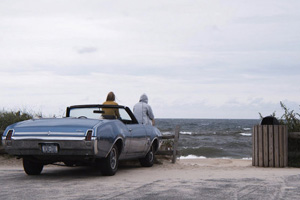 H2N: That ties into the question of paying the bills. You act in other bigger films, you’ve directed commercials or still do, what’s the back-up plan you’re most content with if these passion projects don’t actually make their money back?
H2N: That ties into the question of paying the bills. You act in other bigger films, you’ve directed commercials or still do, what’s the back-up plan you’re most content with if these passion projects don’t actually make their money back?
EB: The best one is, you know, the fact that I fell into an acting career. [H2N laughs] That was never my intention and I’m so thankful that I have it, because, quite honestly, forget about the fact that it’s a nice paying gig that helps me stay truly independent when I’m making my films. But the other thing is the exposure that comes along with being in a Hollywood film—kind of like a Cassavetes model—that profile helps when you’re trying to convince The Today Show to put you on to talk about a movie that cost $25,000. The other thing is we’re, I don’t want to say 100% certain, but we’re 99.9% certain that this new model that we’ve created is gonna keep us in business. The fact that we can make these movies at that number, a lot of people ask, “Well, how do you do it for $25,000?” The one thing is none of us got paid! We just formed a collective and everyone on the crew and the post team owns the movie. So, in success, we’re all gonna be able to pay our bills, and then hopefully make some money on top of that. But we know that we’re gonna make enough where we get to do another one of these next year. As long as you’re willing to tell small stories. That’s the other thing. There are certain screenplays that I have that I know I need to put on the shelf indefinitely, because I want to spend the next couple of years pursuing this uber no-budget model and ride it for as long as we can.
H2N: A lot of filmmakers I know actively loathe the back-end phase of the process: the marketing, the publicity, all that. How do you find a way to make that feel as creative and interesting as making the movie itself? Or is it something you trudge through because you know it has to be done?
EB: On this film, the thing that’s cool is we were independent of any sort of influence through the production. And now, we didn’t sell our film; we licensed it to FilmBuff. We still own the film and because of that, we are in charge of—granted, we don’t have a marketing budget—so everything is being done by us. We’re doing our own Facebook and Twittering. We made our own posters. But it’s our poster that we made in house. All of the trailers, my editor and my post-production supervisor, we made them. No one’s getting paid. We’re sitting in front of our Mac, cutting together our trailers. And, you know, there are plenty of sites that will put your trailers up for free. So, when it’s your baby and you’re doing all that work, it’s much easier to get excited by it. I made this movie a couple years ago called The Groomsman, and we had no control. Every time, to this day, I see the cover art for the DVD I wanna kill somebody! [H2N laughs] And look, it’s a small movie, it didn’t really do much business at the box office, but the tragedy is that DVD artwork, which I never saw or approved, that lives on forever now. You can imagine, you go through a video store and look at the DVD boxes, that can make or break whether or not you’re gonna even give the movie a chance. We never wanted to deal with that heartache again.
H2N: Let’s jump to the other end of the spectrum, where it all begins: the screenplay. It seems that it all began with writing for you, or perhaps writing in conjunction with directing. Has your writing process changed over these 15 years? Have you slowed down?
EB: No, I haven’t slowed down at all. Absolutely love it. I write every day, and I’m pretty strict and diligent with my routine. I usually get to the office around 9:30 and give myself a half hour to return emails. And then from 10-1:30 it’s locked down to write. I’ll give myself an hour for lunch and phone calls, and then 2:30-5:30 is another three-hour chunk. I’m usually working on three different ideas at any one time. I’m always working on the screenplay of what I think will be the next film that I want to direct. But I’m a pretty diligent outliner. I like to beat out the stories before I dive in, so if I hit a wall or I have a day where I just can’t get into the screenplay I’m working on, I make sure to then go over to one of my outlines and make a dent in that, so I can keep moving the ball down the field. If I have a day where I don’t write I have like an anxiety attack. [H2N laughs]
H2N: None of this would be happening without that writing so that’s a great place to wrap this up. I do think that with all of these distributors having made VOD available for so long now, there’s still been more traction with you in the past week that has helped to spread the word. I’m anxious to see in the next five or six months if this has actually been the breakthrough that we’ve all been looking for.
EB: I think so. One of the cable providers, Comcast, has really warmed to the idea and they’ve even started something called the “Indie Film Club.” The idea is, if you don’t live near an art house, let our On Demand channel be the art house in your living room. And they’re really pushing this film hard. They have this idea where once a month they’ll have a guest curator who would be someone who’s got a new indie film out, so they’ll look into the back catalog of that director or actor and they pick some indie movies that matter to them. Even Time Warner in New York, they have a great relationship with the Tribeca Film Festival, and at the last minute they jumped in, really heard what we were trying to do, and offered a ton of help. There’s even a group, a website I just got involved with called On Demand Weekly, and they’re realizing that people are starting to get their heads around the idea that VOD should be a destination as opposed to an afterthought. We have no idea, quite honestly, how well it’s gonna work, but I bet you three years from now, this is the norm.
— Michael Tully








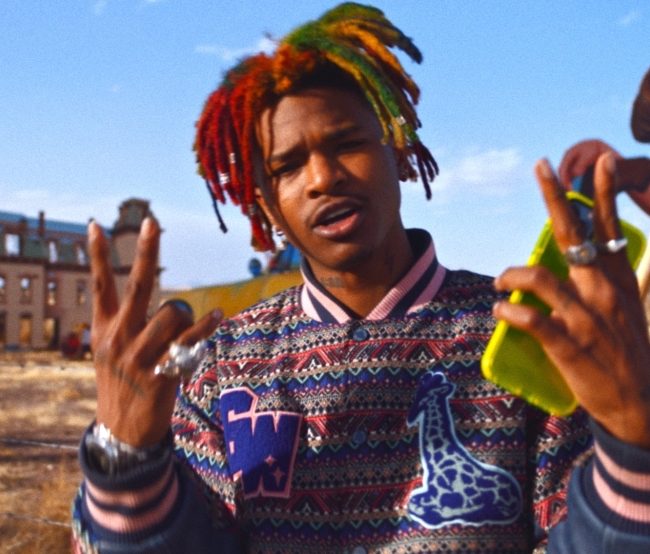
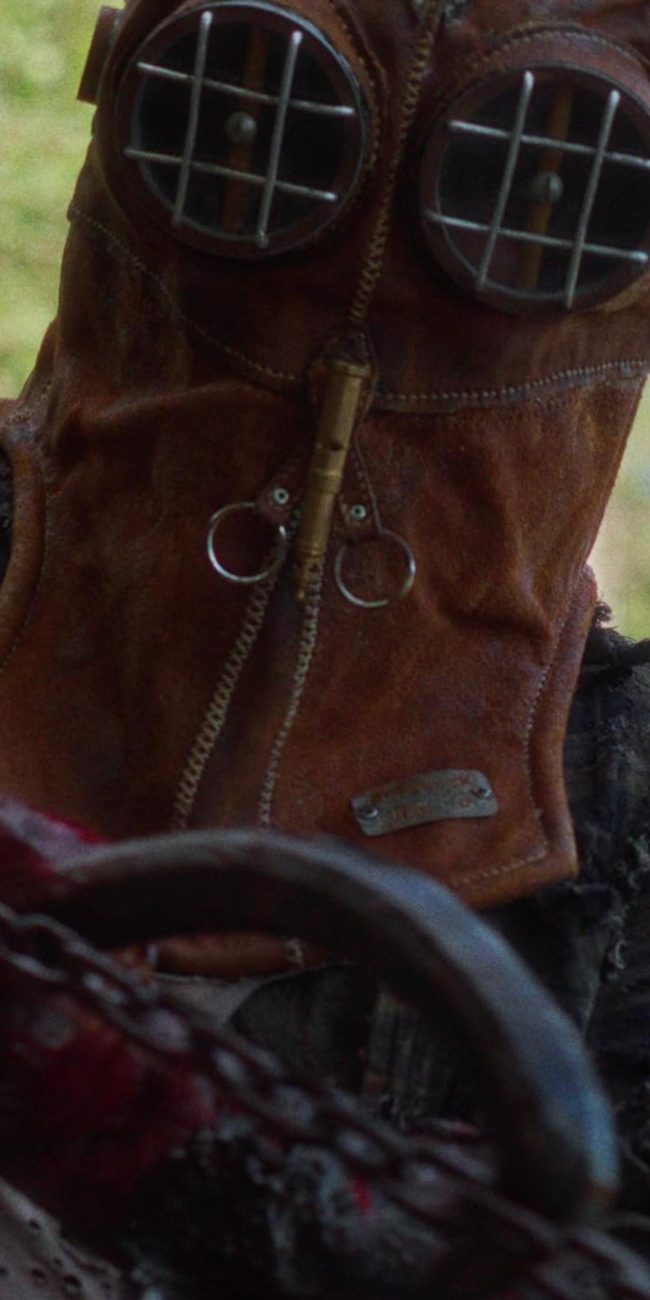


Pingback: VOD REPORT – Hammer to Nail